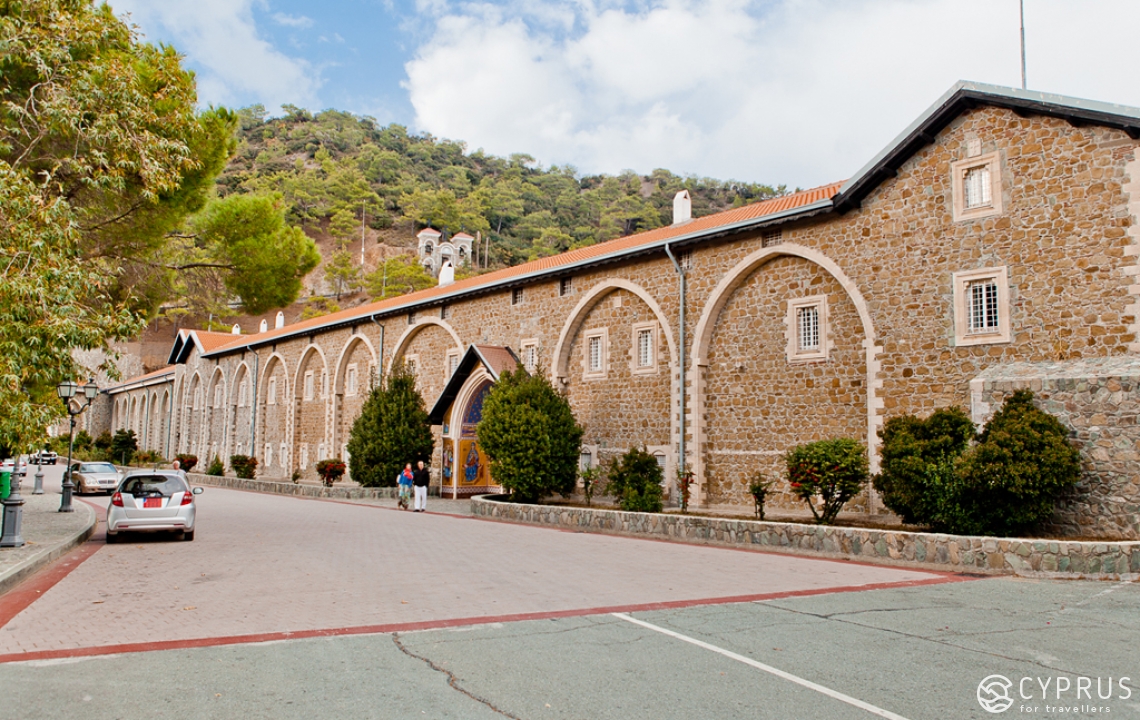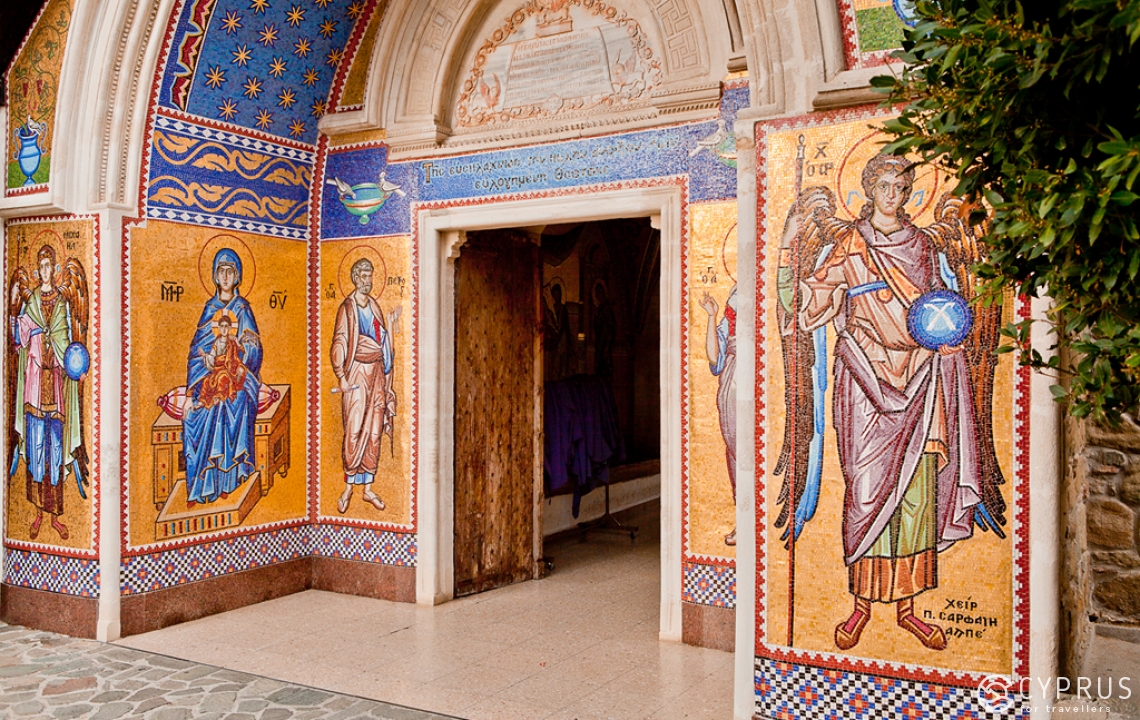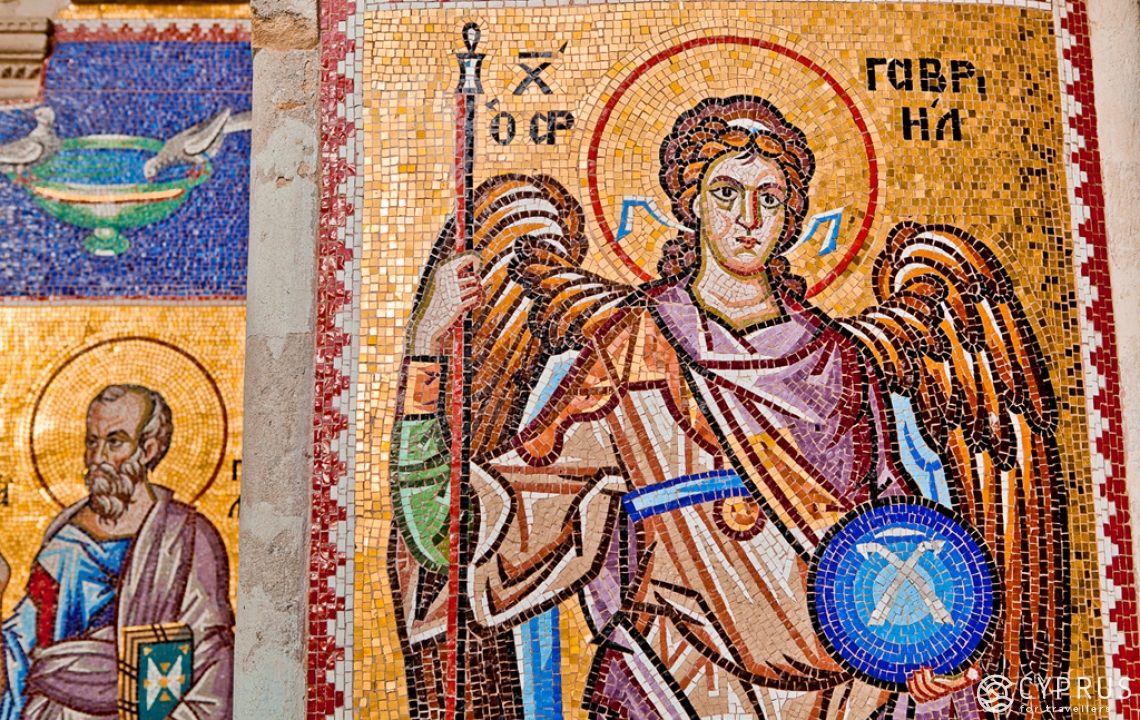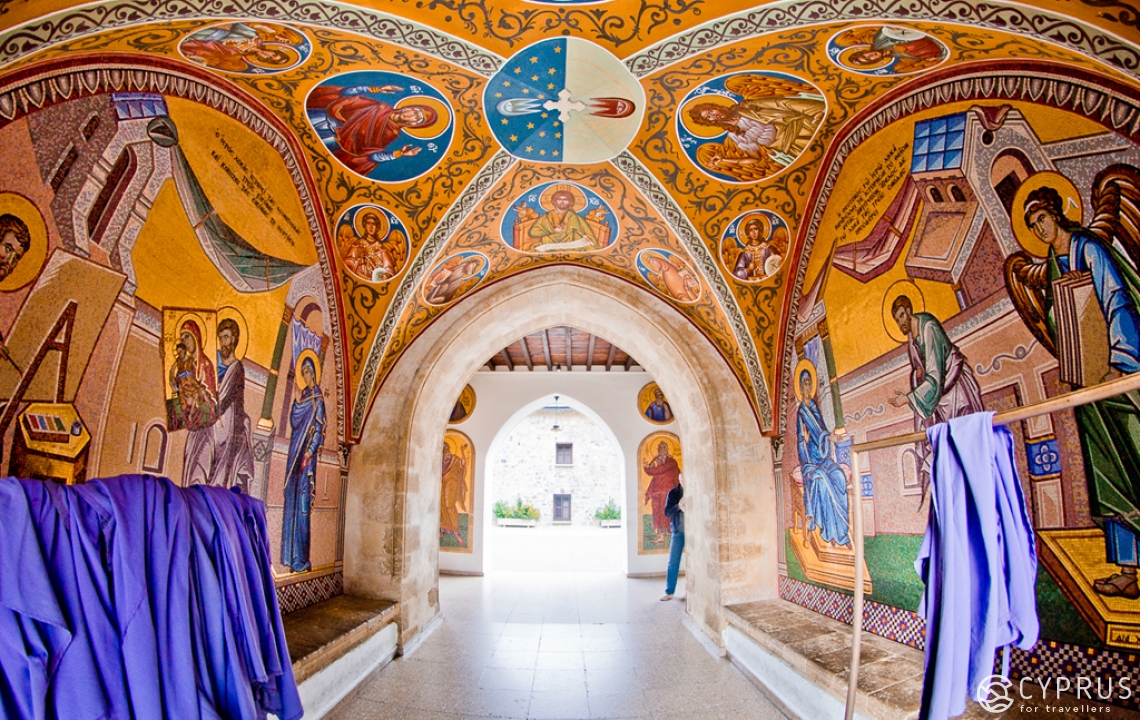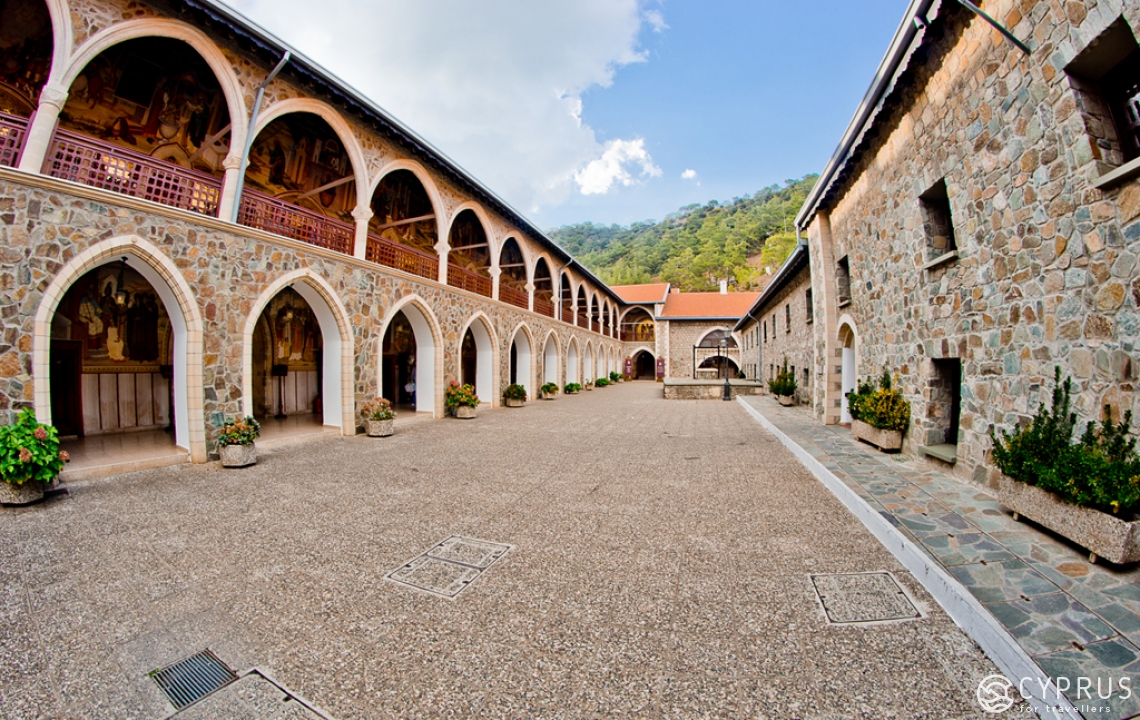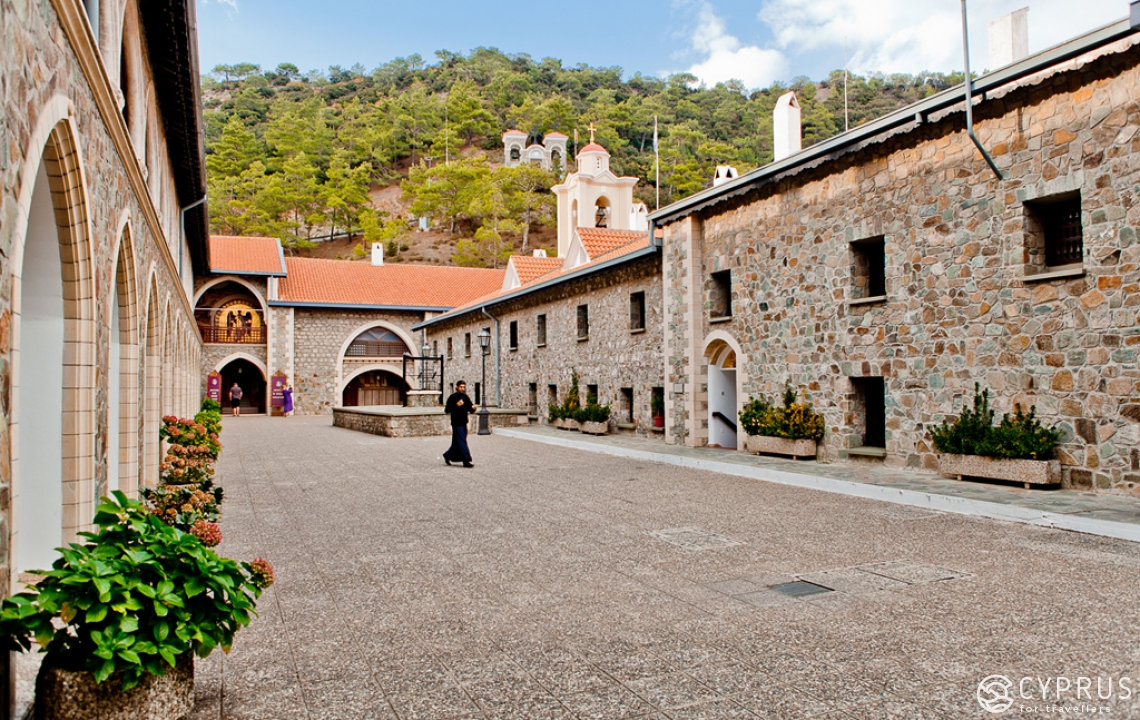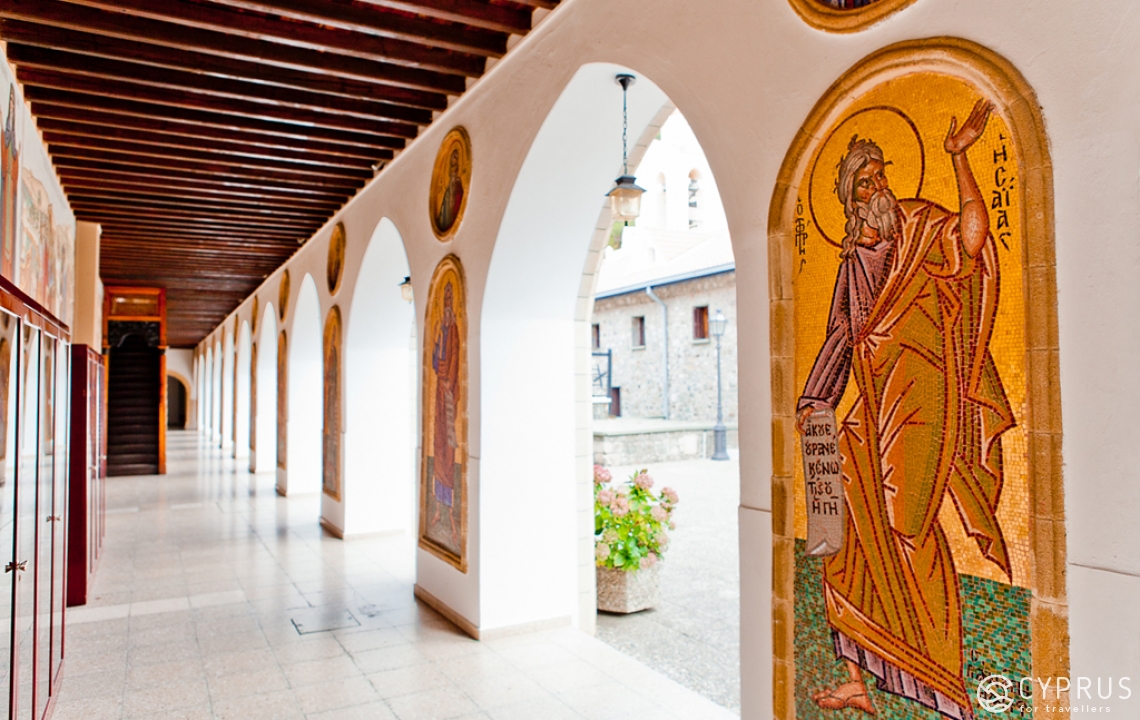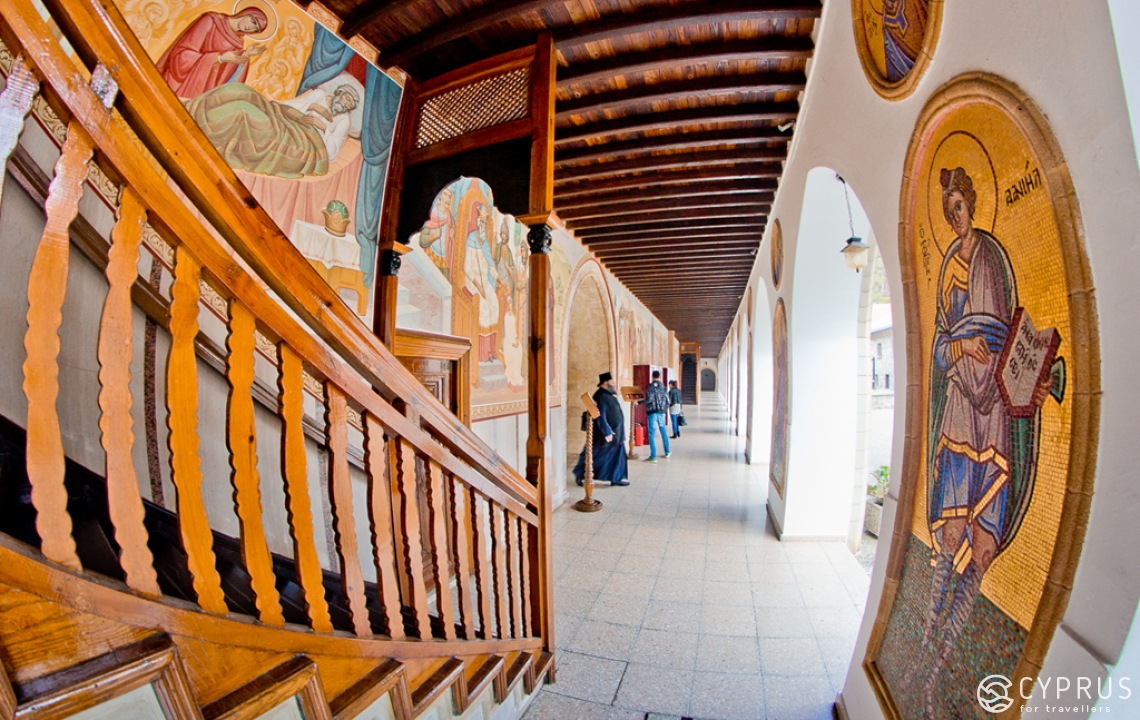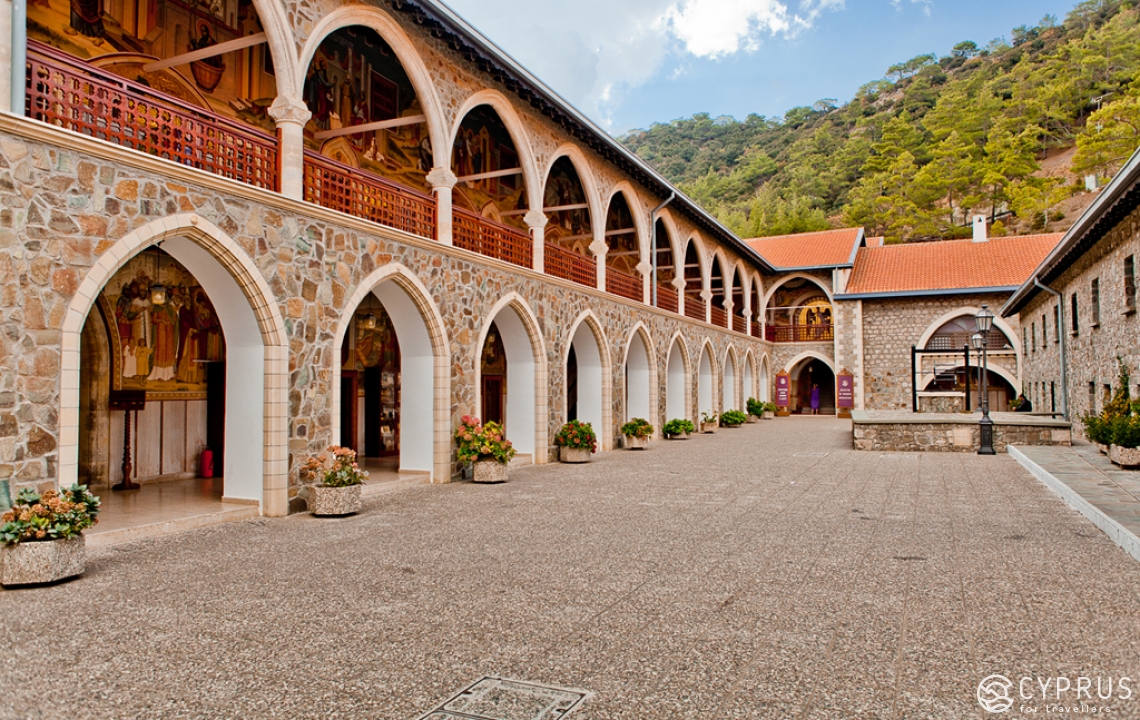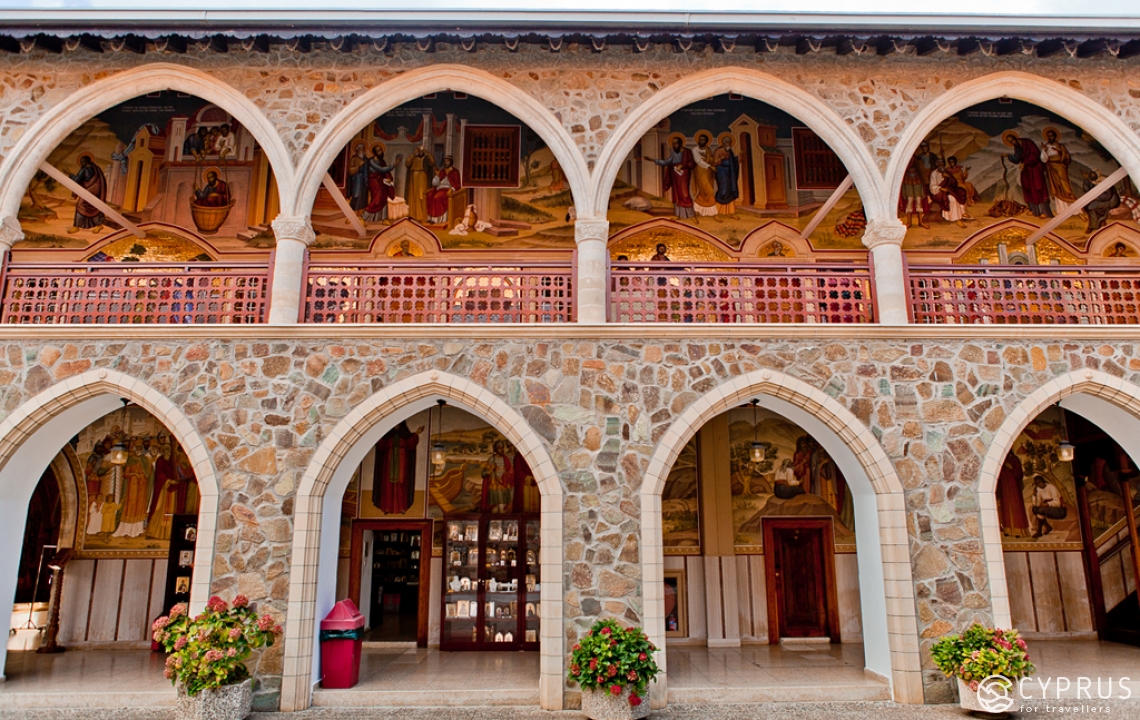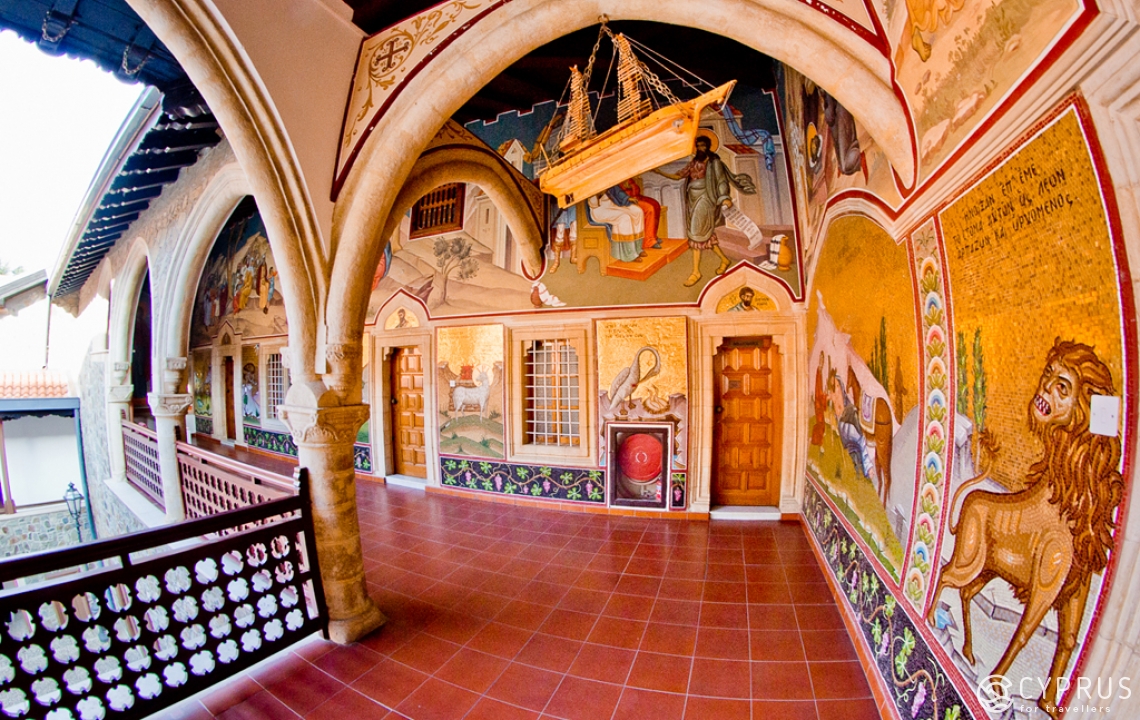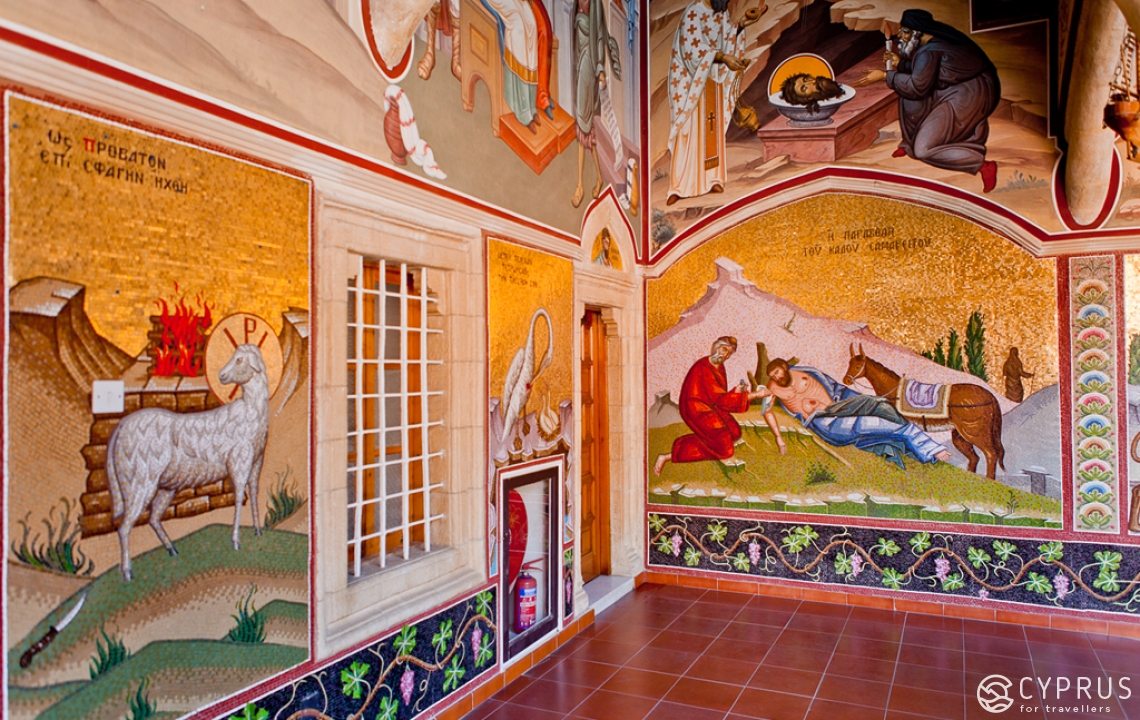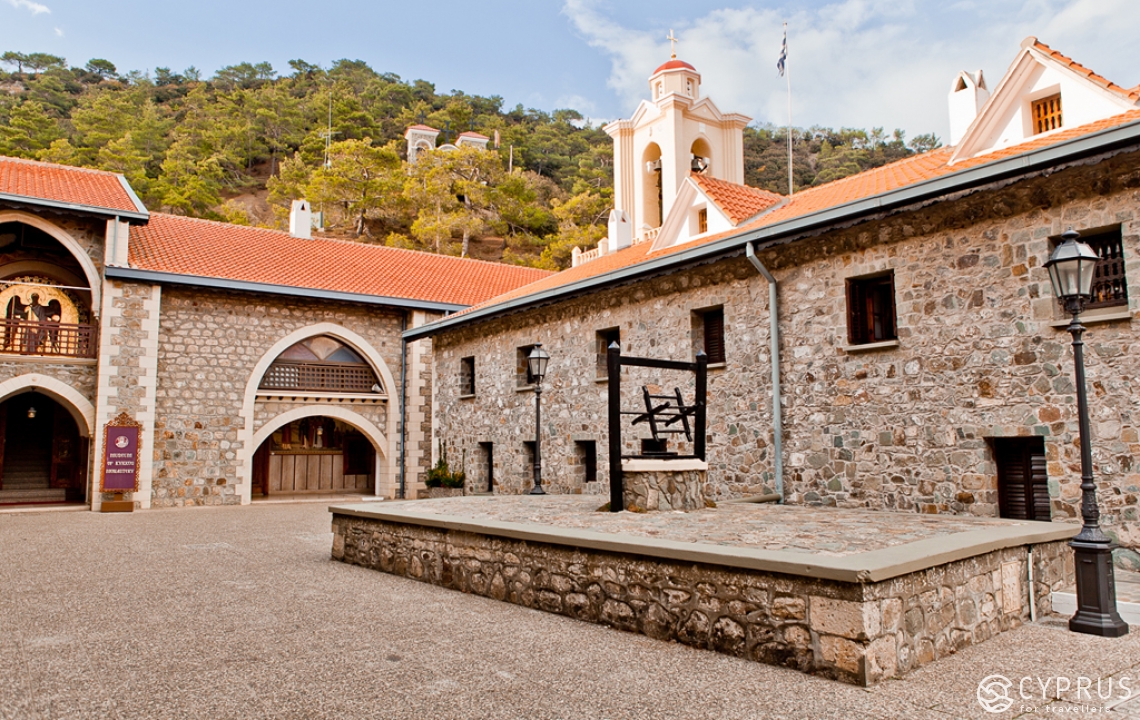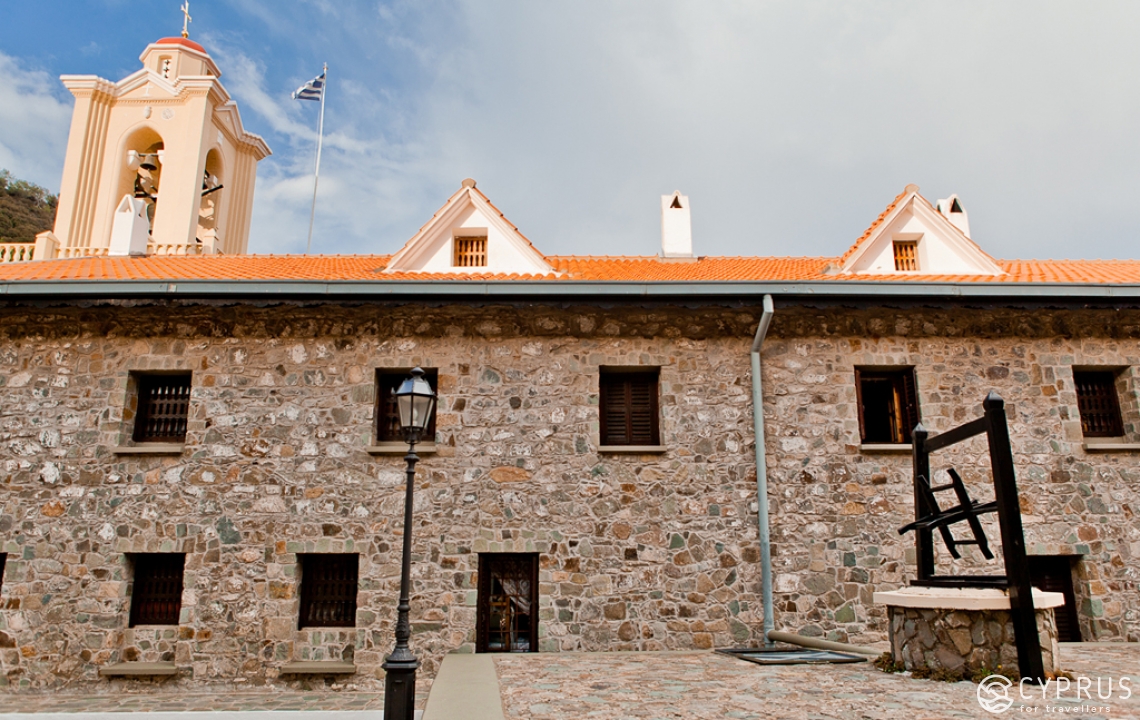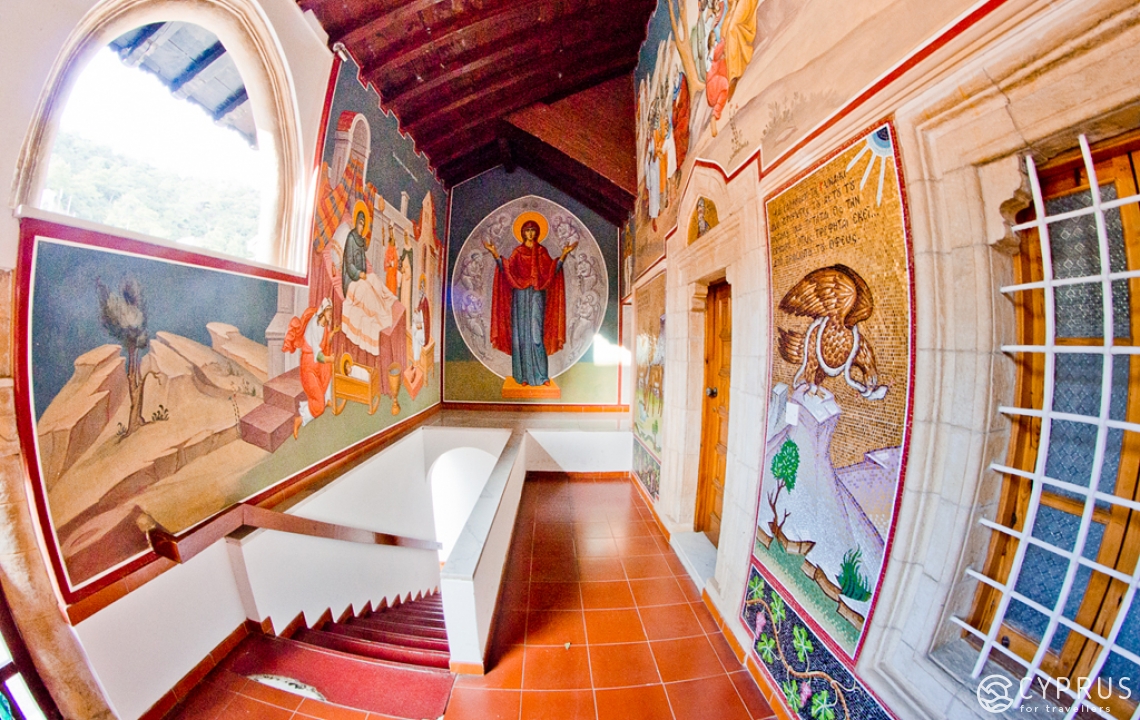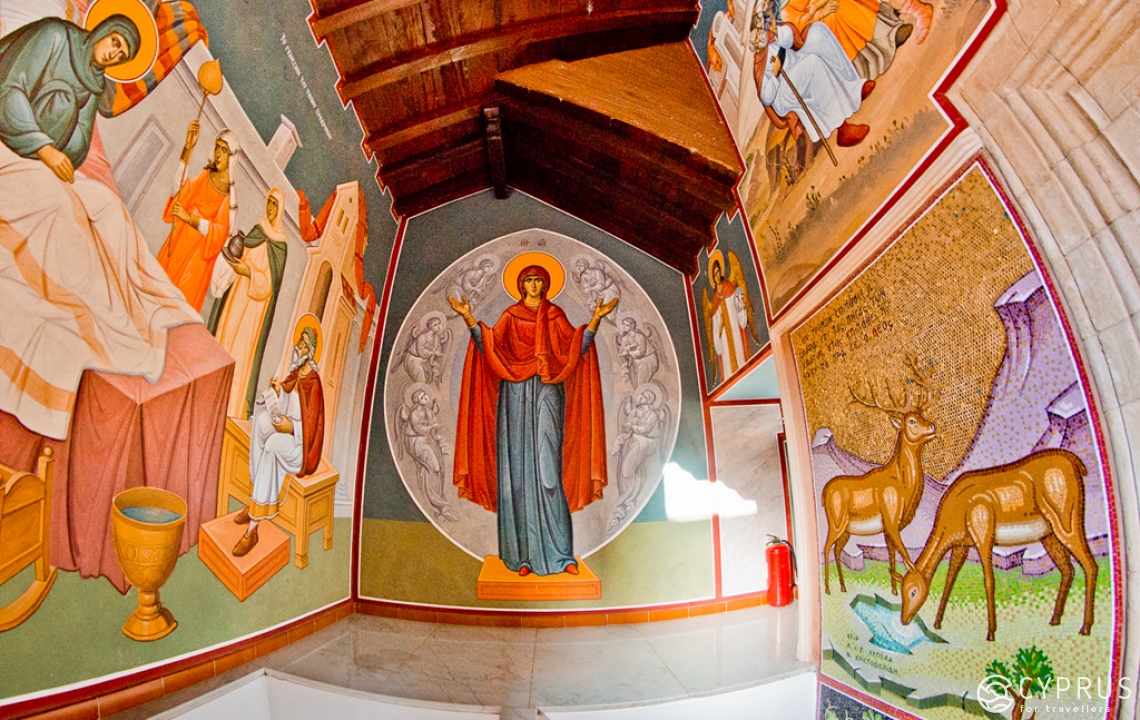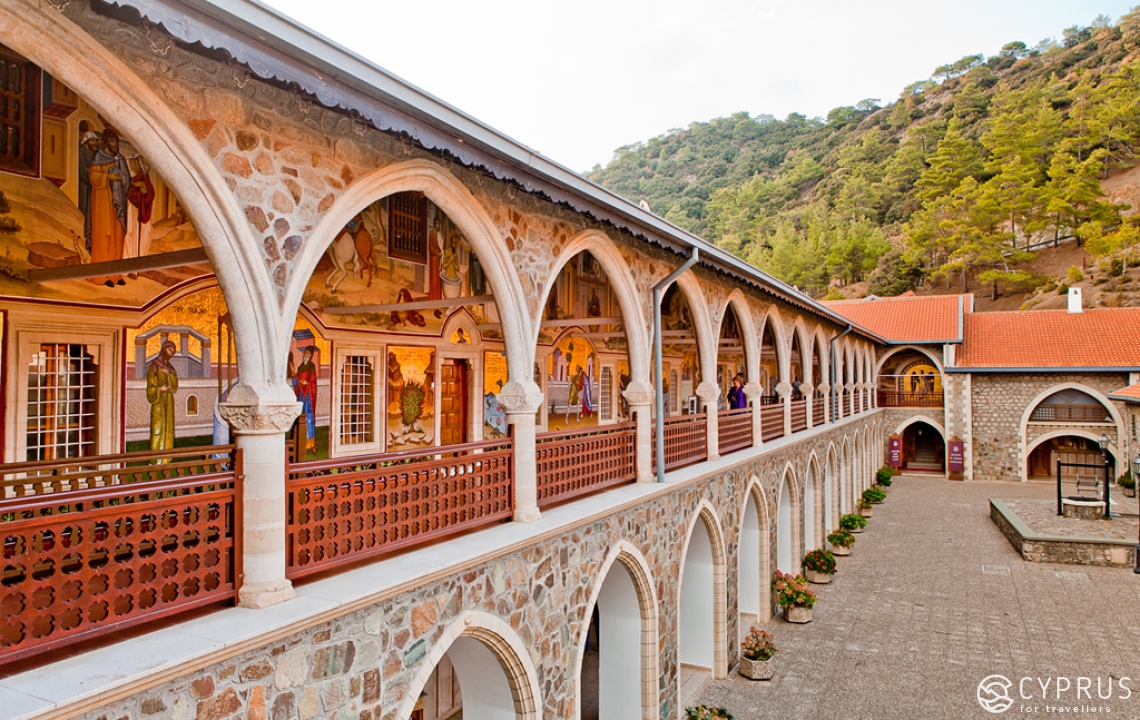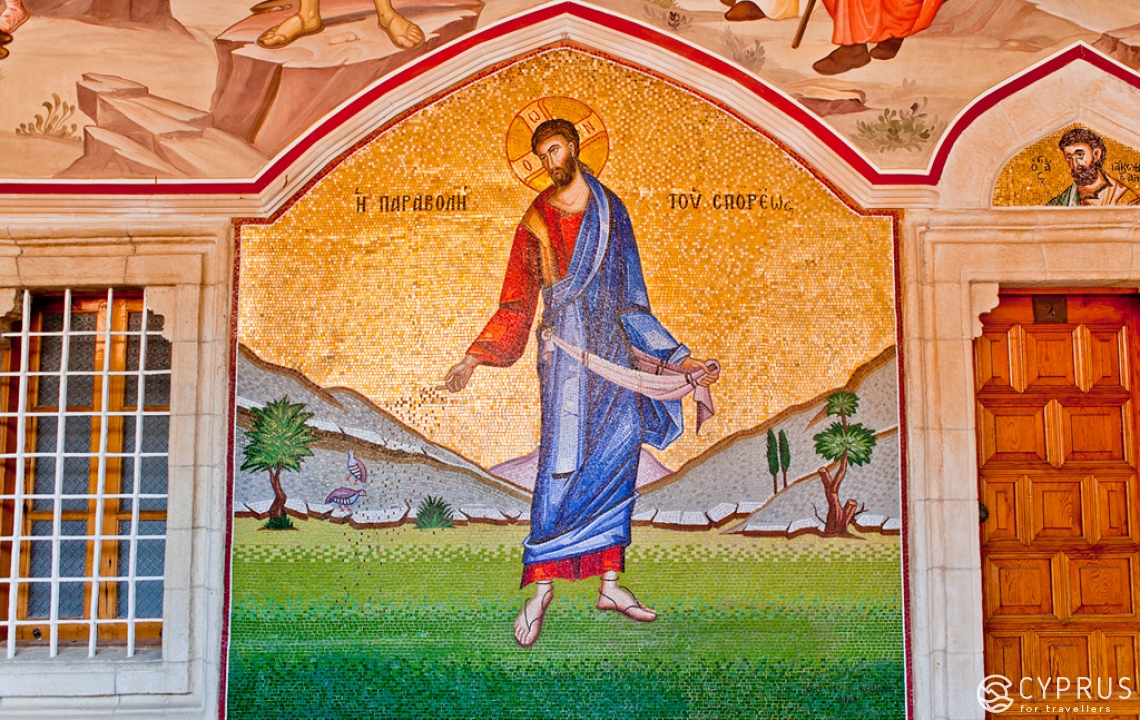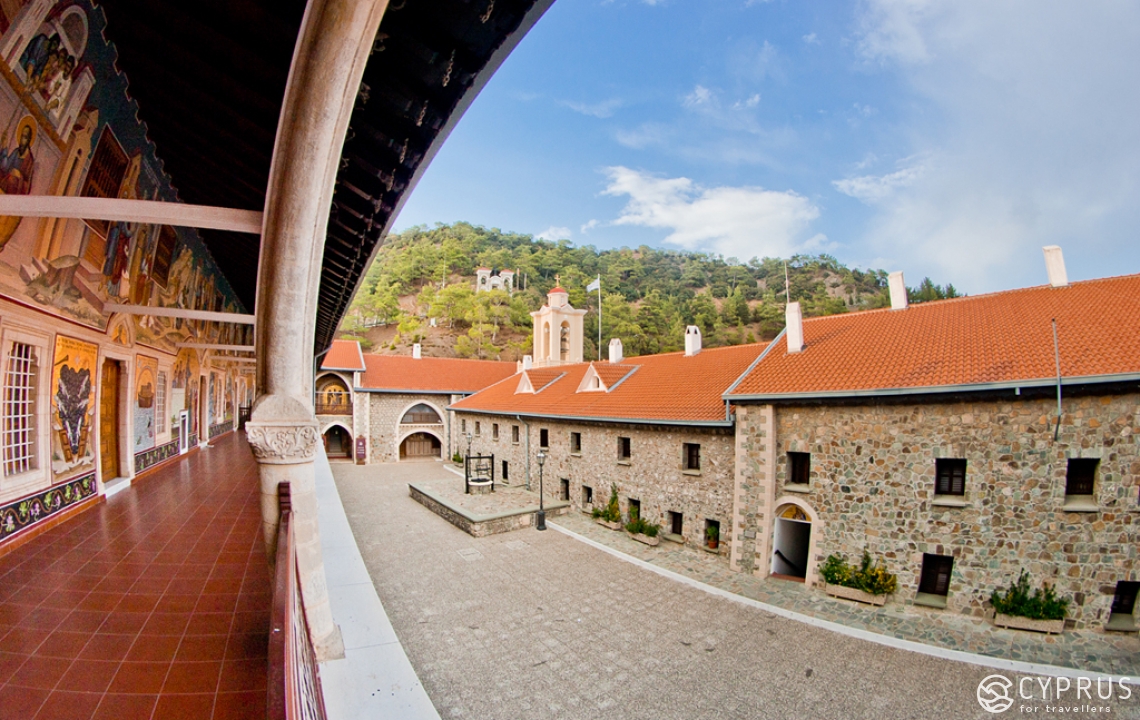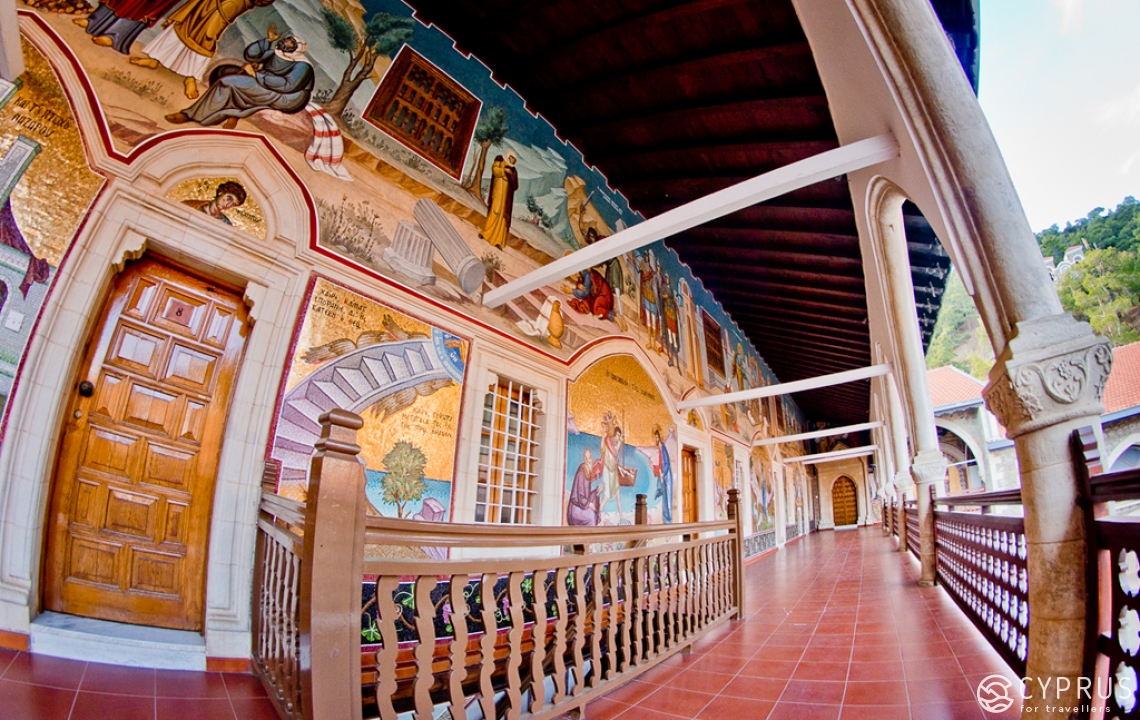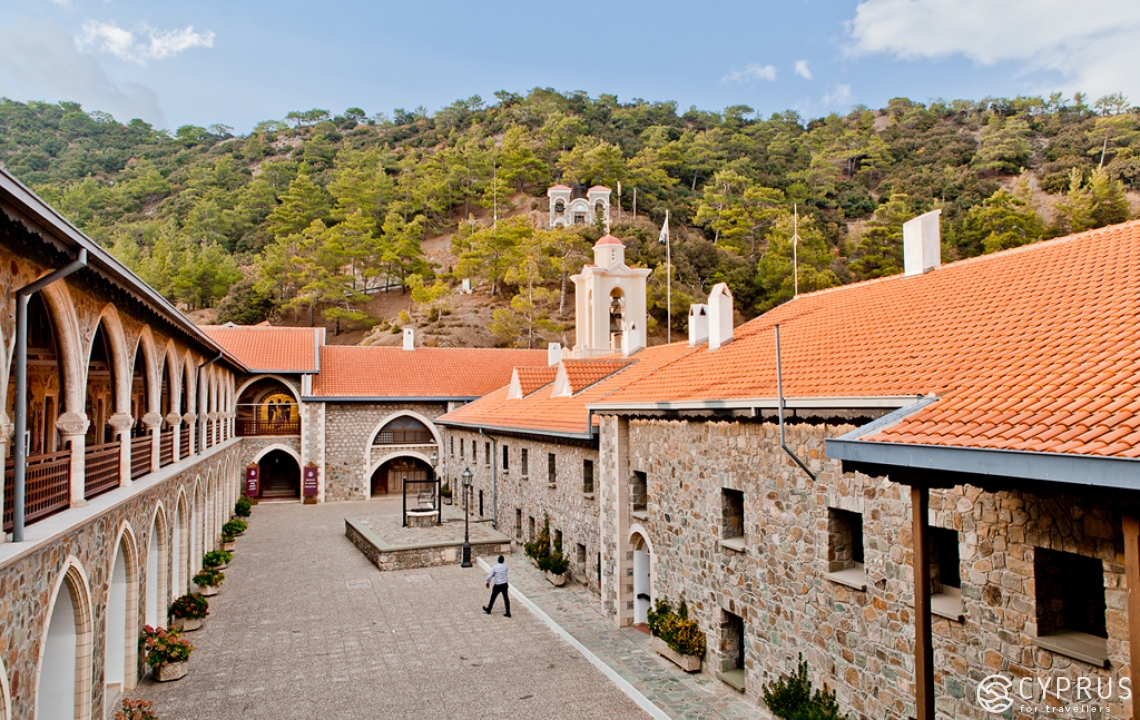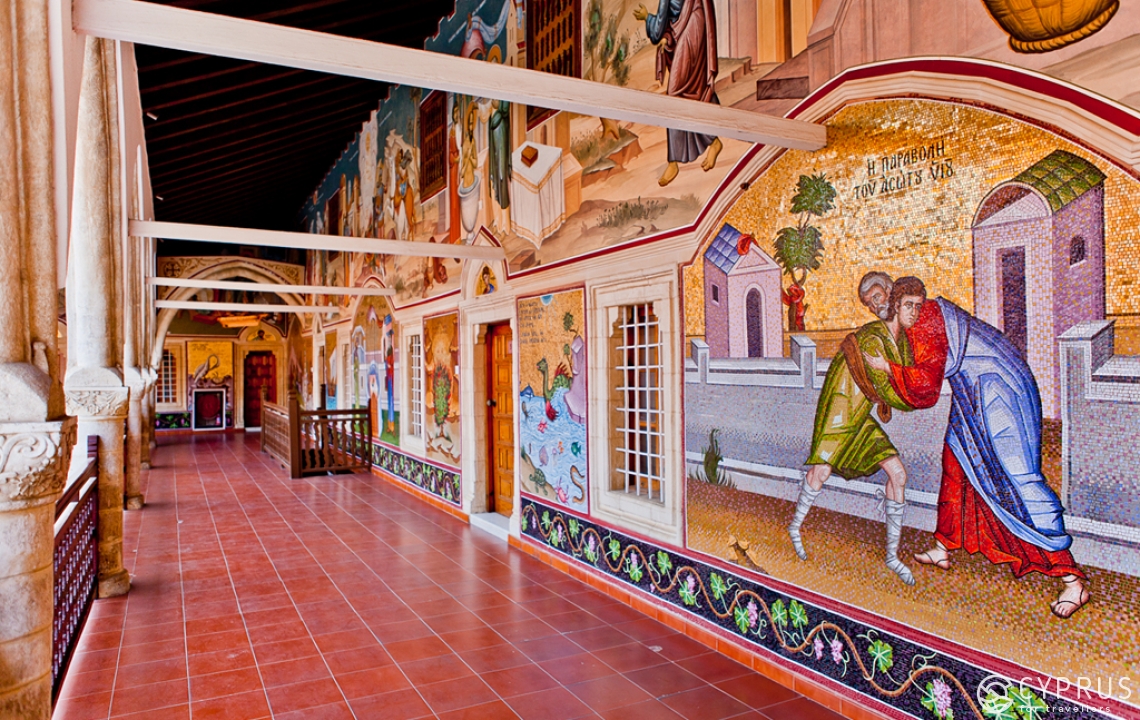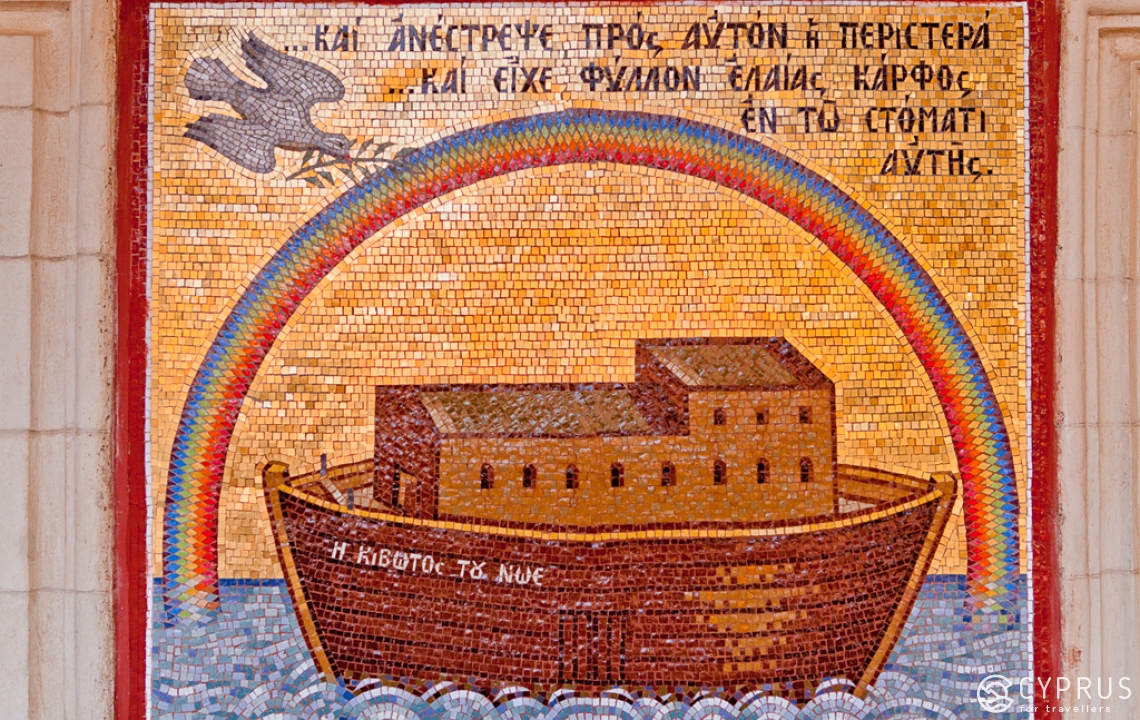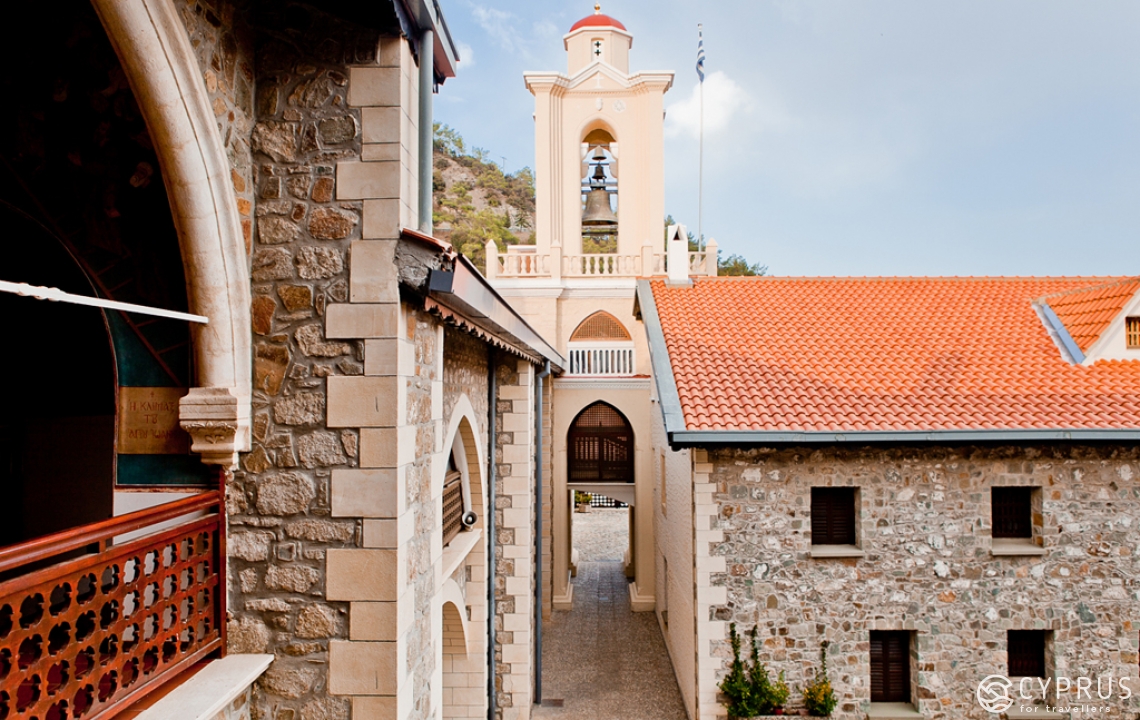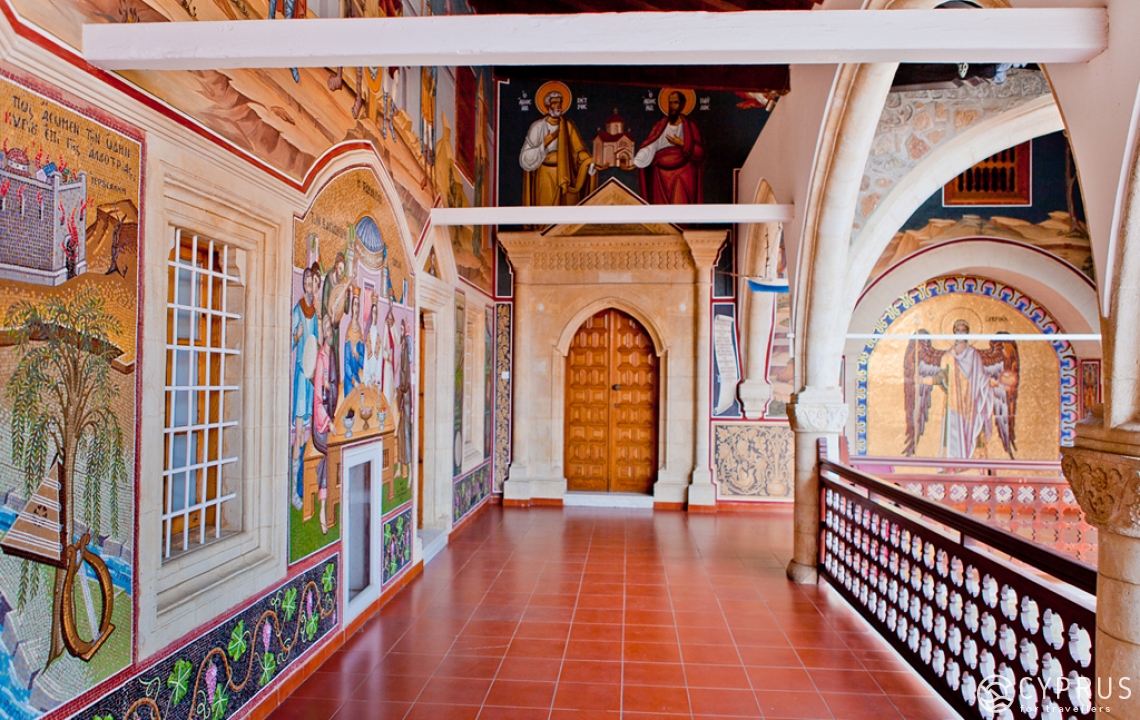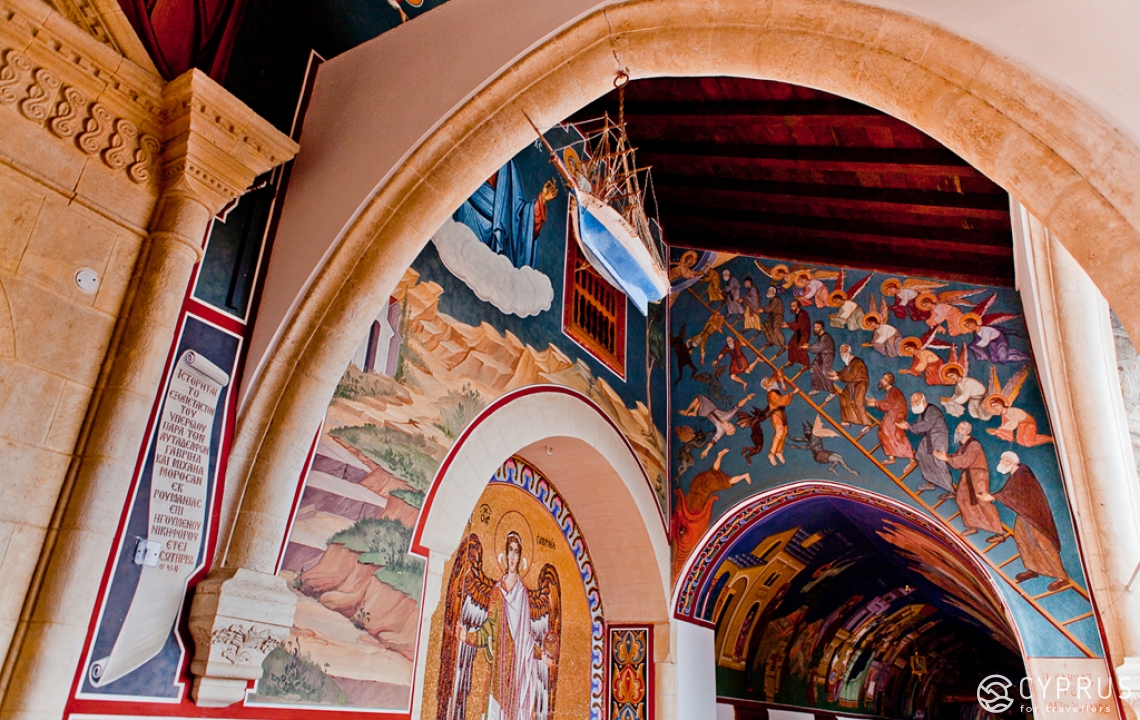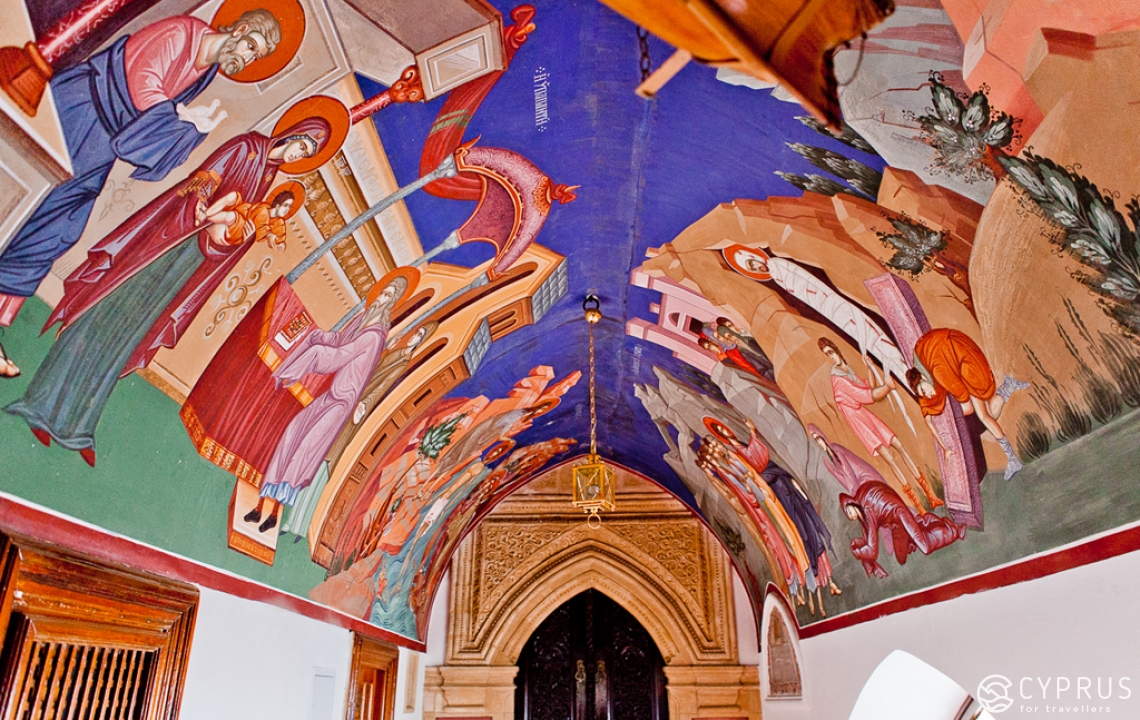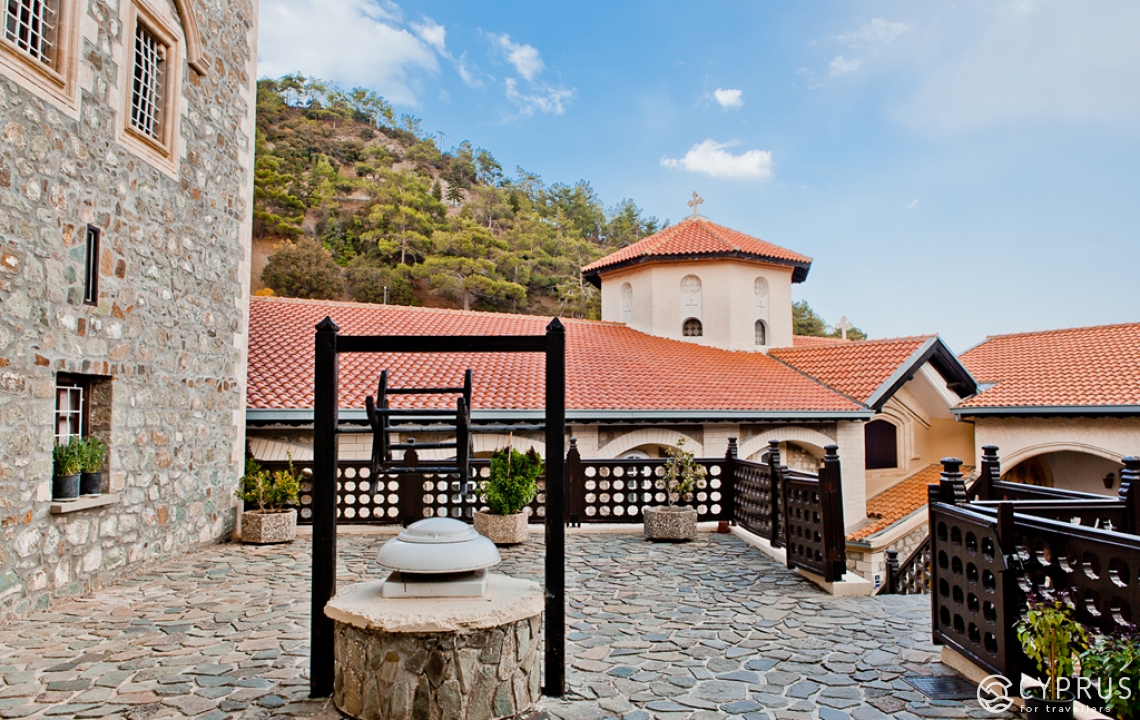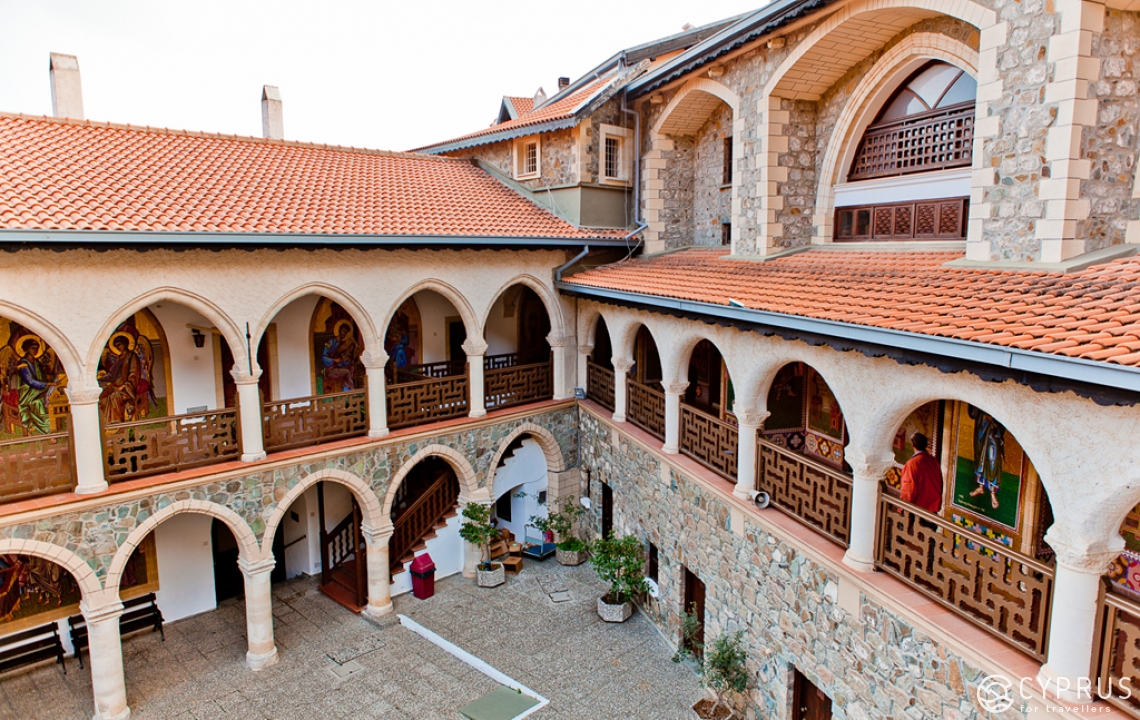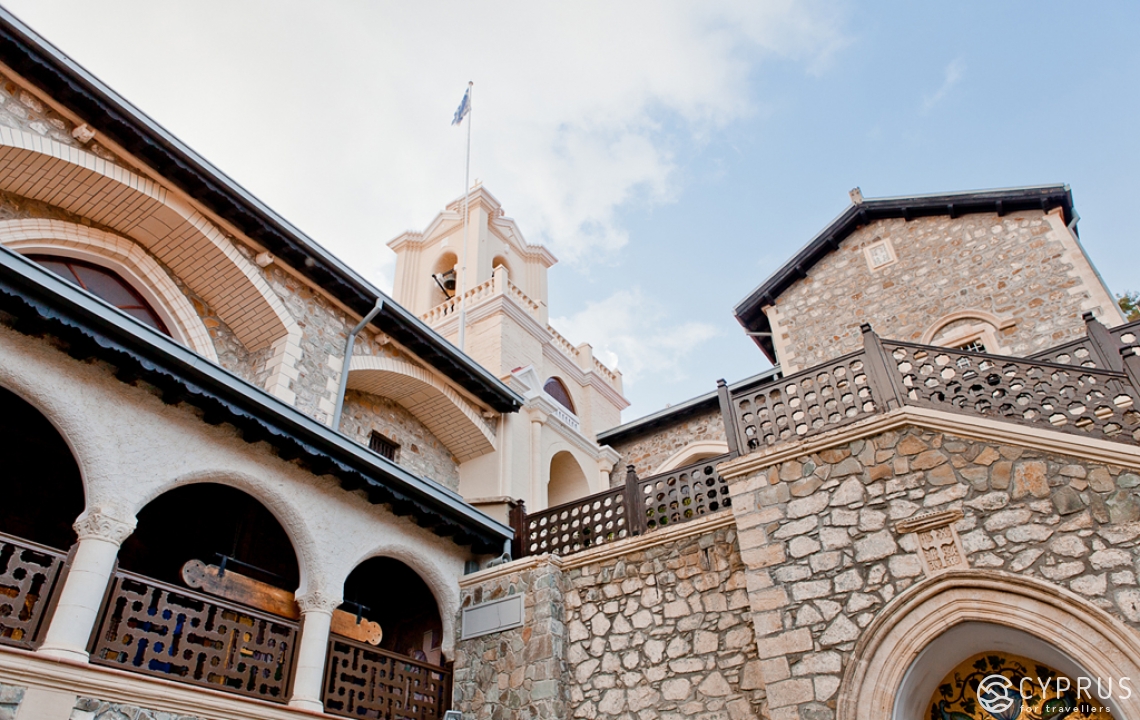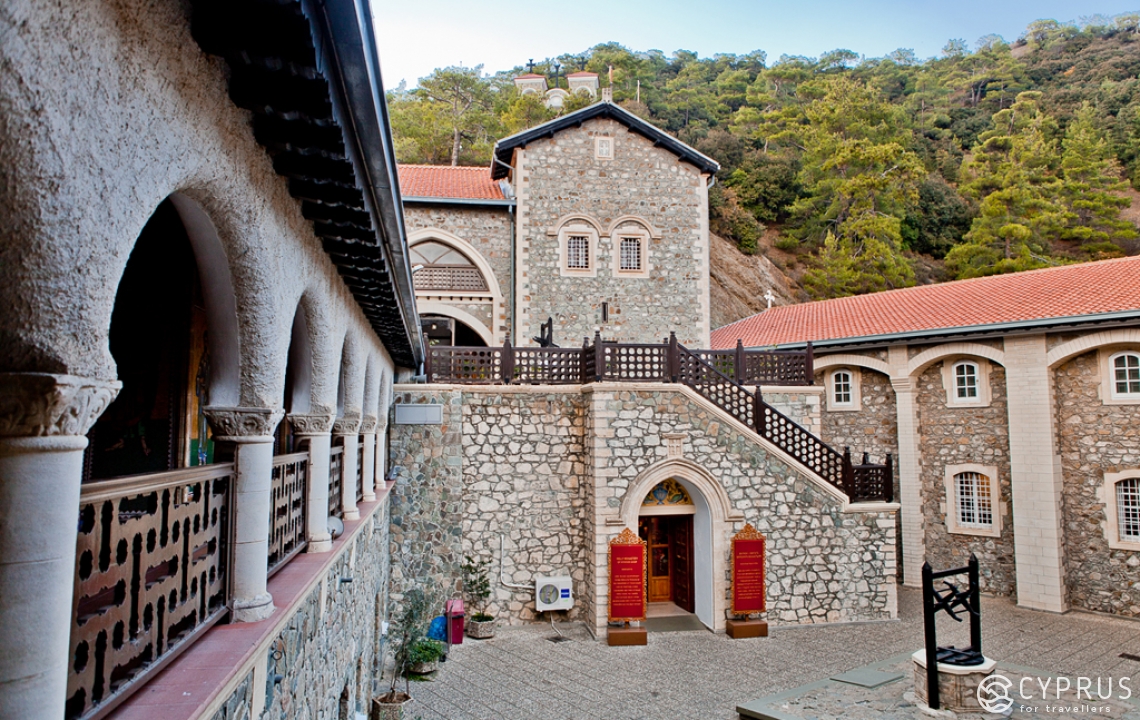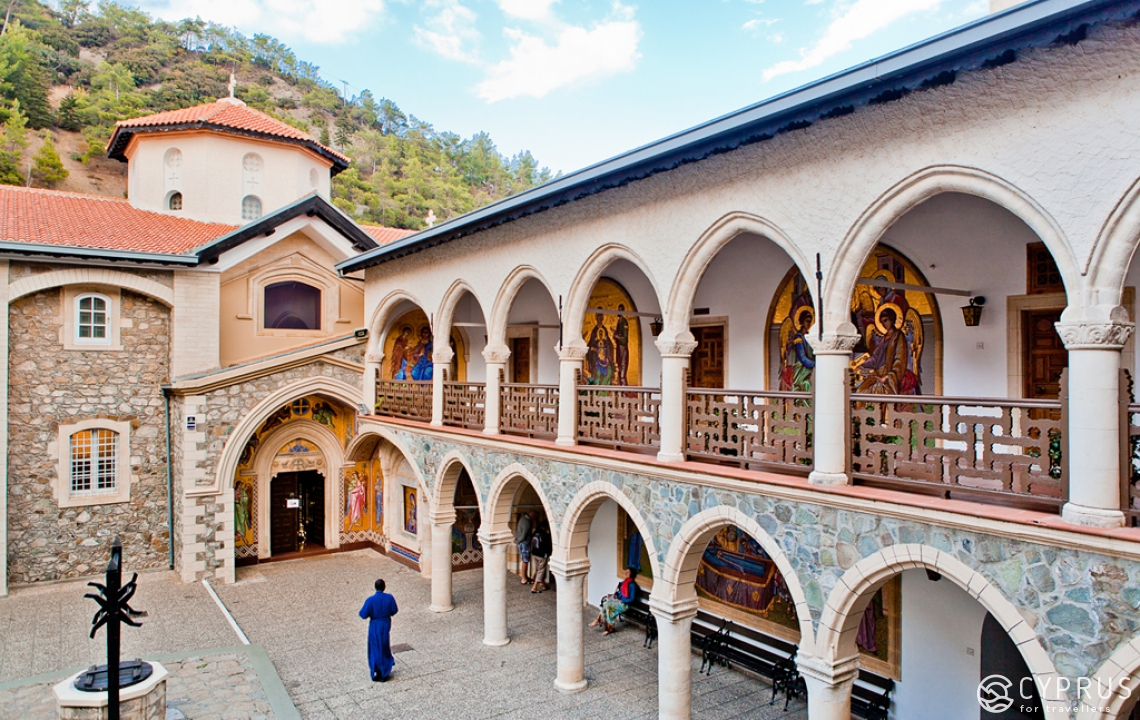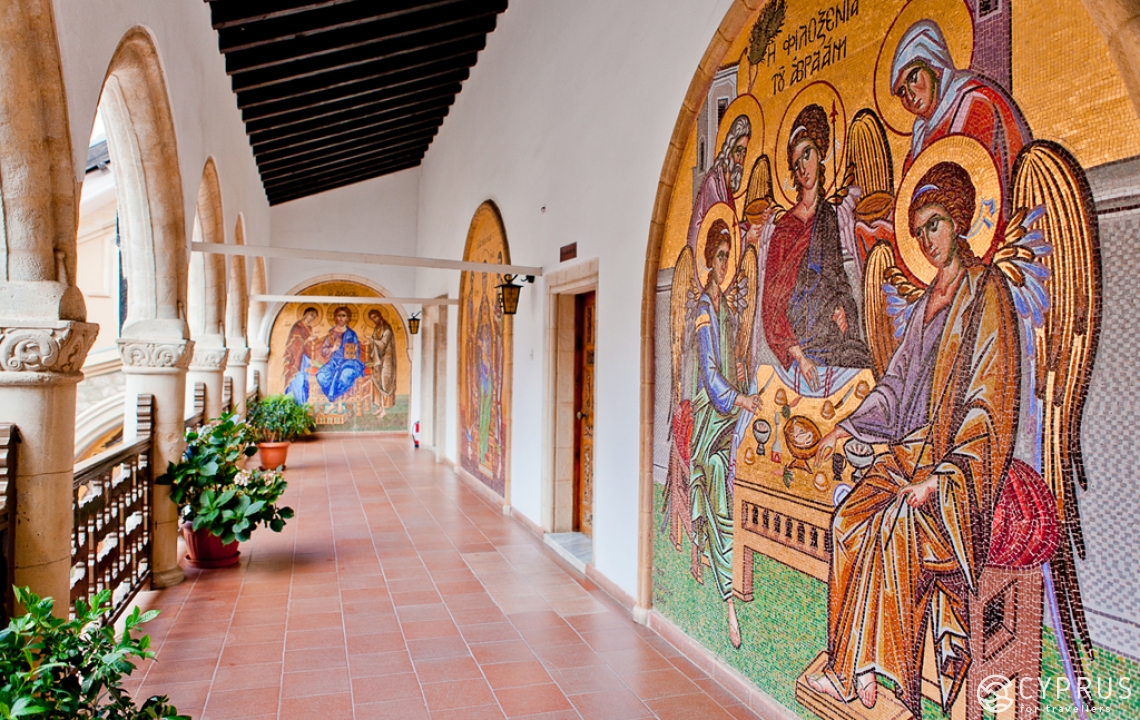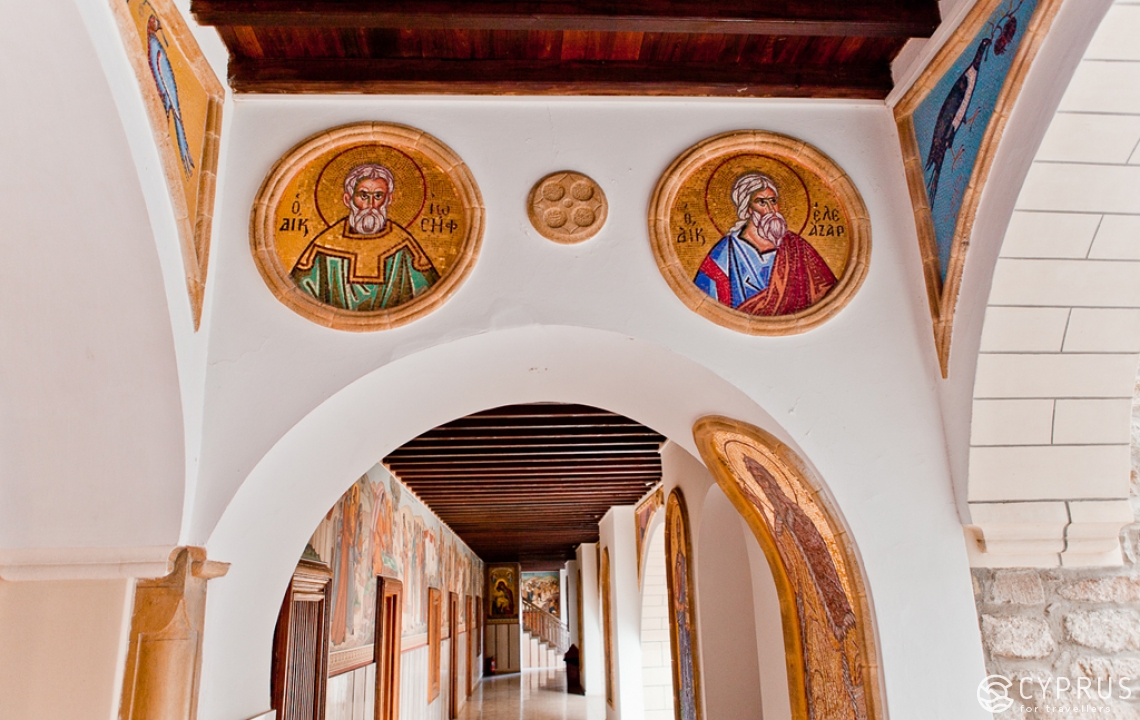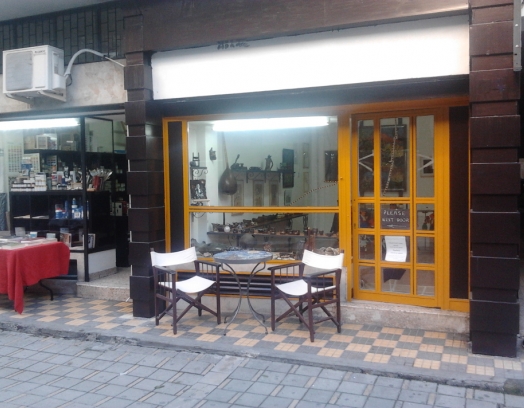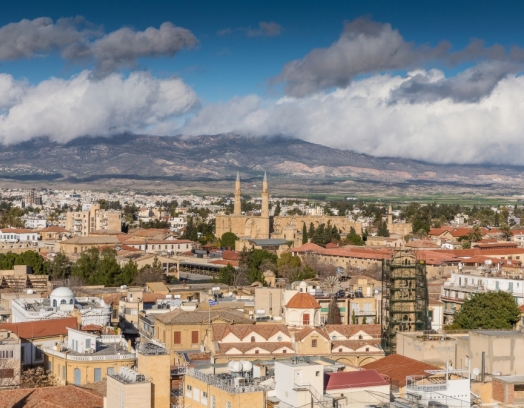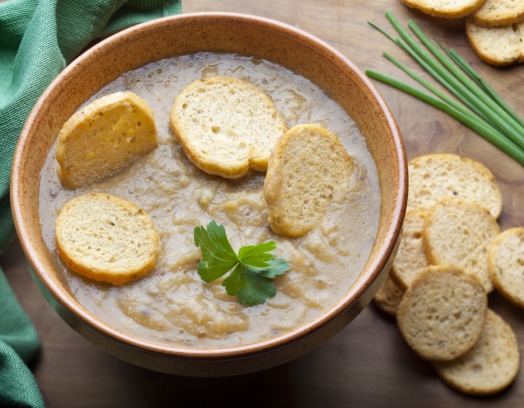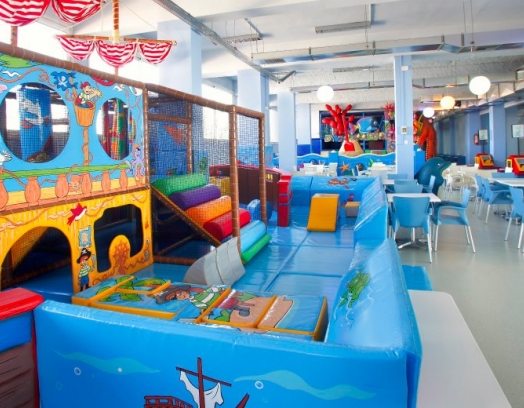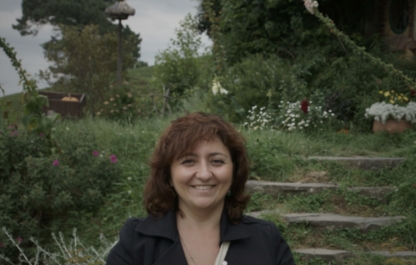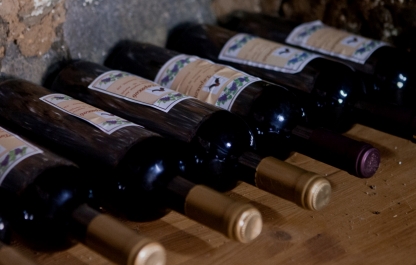Kykkos Monastery (or the Holy, Royal and Stavropegic Monastery of Kykkos) is located in the pinewoods of Troodos. From the time of its founding and to the present day, the monastery has been home to a miracle-working icon of the Virgin Mary, which according to a legend was created by the Apostle Luca himself, while the Virgin was still alive.
The icon is a gift from Alexios Komnenos — a Byzantine emperor, who also financed the construction of the monastery in the 11th century.
During its construction, a piece of the True Cross was placed under the foundation stone, which made the monastery stavropegic, meaning independent from the eparchy.
There are several theories behind the monastery’s name. One of them claims that a little bird had predicted its creation, singing: “Kikkos-kikkos will become a mountain monastery”. Another theory suggests that the word “kykkos” comes from the name of the local plant, called “kokkos”.
But how did the icon of the Virgin Mary, which used to belong to a Byzantine emperor, end up on the island? There is a legend, which claims that a hermit called Esaias used to live in a small cave at the site of the future monastery. One day Manuel Boutoumites, a Byzantine governor of the island, stumbled upon Esaias’ cell while hunting. Boutoumites had gotten lost and asked Esaias to show him the way. But the monk, who had taken an oath of silence, would not answer his questions. Boutoumites got angry and punished the monk.
Boutoumites forgot about the incident, but when he returned home he was struck by an unknown illness, which couldn’t be cured by any doctor. Boutoumites finally remembered the hermit and realized that he wanted to apologize to him for an undeserved punishment. Esaias forgave Boutoumites and began to pray for his health, which improved shortly thereafter. Boutoumites wanted to thank the old monk for his miraculous recovery, but the only thing that Esaias wanted was the icon of the Virgin, which was kept in the imperial palace at Constantinople.
Boutoumites and Esaias traveled together to Constantinople. There the monk cured the emperor’s sick daughter and performed several other miracles, which had impressed the ruler enough to convince him to part with his beloved icon. This is how the icon made its way to Cyprus.
The construction of the monastery began during the same period — at the beginning of the 11th century. The miracle-working image of the Virgin was placed in the iconostasis of the main church, to the left of the Royal Doors. A remarkable fact surrounding the icon is that only two people have had a chance to see the face of the Virgin, which remains hidden by a velvet veil. Allegedly, one of the two people who broke the rule, which forbade anyone to see the icon, was Patriarch Gerasim of Alexandria in 1669. The Patriarch lost his sight shortly after the incident. After repenting, he was forgiven and gained his sight back. His written will, which has been kept to the present day, urges everyone not to defy this rule.
To the right of the icon there is a black cast of a human hand. Allegedly, it belongs to an audacious visitor, who thought of touching the holy images.
Stories of the miracles connected to the icon are part of the monastery’s chronicles. They include stories of exorcisms and of dying people being saved, sick people being healed, infertile women bearing children and stories of rainfall amid destructive drought. One particularly interesting account is that of a group of fishermen who were caught in a terrible storm of 1718. After reaching the height of despair, the fishermen began praying to the Virgin. Shortly thereafter, the wind began to die down and they could make out the coastline. The rescued fishermen gave the monastery the rostrum of the swordfish, which they had to fight during the storm. The gift has been kept to the present day and symbolizes the Virgin’s protection.
The monastery has been struck by fire on four separate occasions and each time it remained unscathed. Ephrem of Athens once recounted a miracle that took place at the monastery in 1365. Wind had picked up the fire that was started by a local villager in the nearby forest and brought it to the walls of the church. Meanwhile, an old, paralyzed man was standing by the wall and praying, when he heard a voice saying: “Stand up, take the icon and run”. The old man was suddenly able to walk. He immediately entered the church, took the icon, ran out and climbed one of the tallest trees in the forest. When he was safe, he realized just how big a miracle had taken place.
The main entrance to the monastery is a portal, which is decorated with relief-covered arches as well as images of the Virgin, Christ the Savior and the Apostles Peter and Paul. The spacious courtyard of the monastery contains the only remaining well that had for centuries served as the main source of drinking water for the monks.
The refectory is decorated with holy images of Cypriot saints and scenes from the New Testament. Entrance to the Church and Archeology Museum, which was founded in 1995, is located in northern part of the monastery. The museum houses a great collection of religious art. Its interior decorations and the background music remind us of the monastery’s connection to the Byzantine Empire. Meanwhile, its halls display books, oil lamps, church ware, chandeliers, candleholders, crosses, rizas and many other objects.
The monastery’s walls are lined with monk cells, service facilities and a library, which contains rare church publications. The walls of the first floor gallery are decorated with frescoes, which depict stories describing the creation of the monastery and the miracles performed by the icon of the Virgin Mary.
The monastery’s main church is located in a small courtyard, which visitors can find by walking down an arched portal.
The first version of the church was made of wood, had one nave and a pointed, steep, tiled roof. Then, in 1521 a stone church replaced the wooden church. And in the middle of the 18th century the church finally began to acquire its current appearance: the main nave was covered by a dome and surrounded by two aisles, which were decorated with frescoes – facts that have been documented by a Russian monk and traveler Vasily Grogorovich-Barksy.
Today the church is a dome basilica, lined with rows of columns that buttress the pointed arches and divide the interior space into three aisles. The central nave is decorated with a semicircular apsis and is dedicated to the Virgin. The southern nave is dedicated to All the Saints and the northern nave is dedicated to the Archangels Gabriel and Michael. One of the portals is decorated with reliefs of a Byzantine cross and birds, which historians say date back to the 11th century.
Church floors are covered in mosaics created in the Florentine style, which is known for seamless adjustment of stone plates. The carved iconostasis features icons that date back to the 16th-19th centuries. The antique, intricate pulpit is decorated with images of the four Evangelists and a figure of a winged donkey, which is said to symbolize Divine inspiration, spiritual strength and Resurrection.
Another interesting aspect of the church are the old wooden chairs, which allow people to either sit on them or lean on their high armrests (chairs of this kind first appeared in Greek temples on Mount Athos and are called “stasidia”).
The fresco located in the altar space was created by a Crete artist called John Cornaro. The fresco depicts the Virgin as the Queen of Heaven. Some of the frescos at the church date back to the 1500s; others were restored in the 18th century.
The bell tower, which perfectly complements the rest of the buildings at the retreat, was constructed at the end of the 19th century. Its construction was possible after the lifting of the ban on using bells to announce religious service (the ban was introduced in Cyprus during the Ottoman rule). The largest bell, which weighs 1280 kilograms, was a gift from tsarist Russia.
The roundabout galleries have been adorned with mosaic canvases created in the style of Byzantine iconography. The carved, wooden door of the Bishop’s cell has retained fragments of the floral patterns and the spiral-looking composition associated with the World Tree, as well as images of animals.
Some of the frescoes depict scenes from the lives of the local monks. The walls of the small, vaulted chapel, which is located below the Synod hall, features the martyrdom of Saint Charalambos, the assumption of Saint Ephrem the Syrian, as well as the Appearance of Archangel Gabriel to Pachomius the Great.
Visitors are welcome to stay in the guest rooms specially kept for the pilgrims. Those who come to the retreat should also visit the stone chapel on Throni Hill, which is located next to the tomb of Archbishop Makarios III — Cyprus’ first president.


